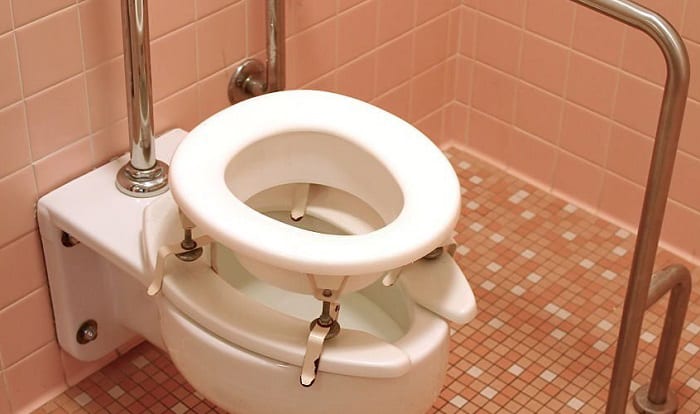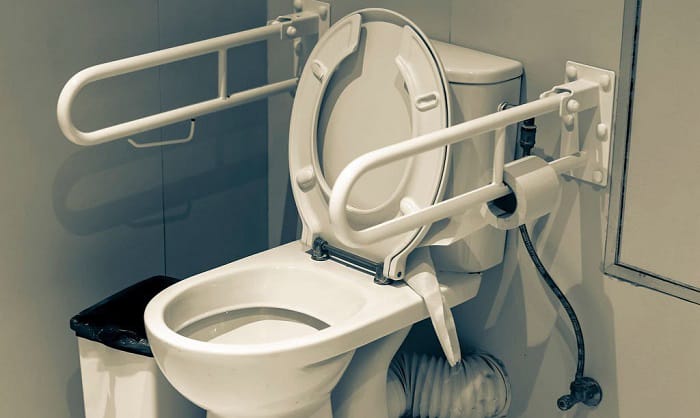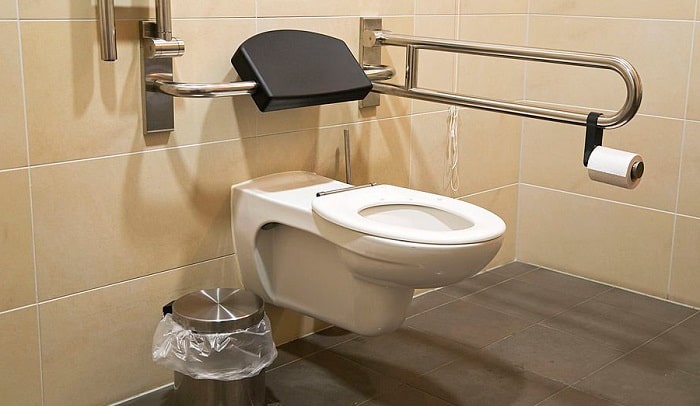The Americans with Disabilities Act (ADA) oversees toilet guidelines that include toilet dimensions and installation. So, what is an ADA toilet?
It’s a toilet that is easy to access for a person with disabilities. It must have a bowl height of 17 to 19 inches, enough space, and handlebars. As you can imagine, these things help disabled people move around.
You may have it at home when necessary, but business owners, except those who hire below 15 full-time workers, are required to have this.
ADA toilets have a common setup apart. Nevertheless, when you need to construct it, you have to know more than the ADA-compliant toilet meaning.
Read on for all the details.
Table of Contents
Identifying an ADA Toilet Through Essential Features
An ADA toilet makes life easier for disabled people since it has parts that let them respond to the call of nature like normal individuals. Identifying the essential features will allow you to know what makes a toilet ADA compliant. They are as follows:
- Ideal height – As mentioned, the ADA height toilet bowl is 17 to 19 inches, so a person with a disability won’t struggle with sitting down and standing up from the toilet.
- Raised toilet seat – This helps the disabled sit and stand from the toilet with ease.
- Removable and tool-free arms – It encourages flexibility among prospect users.
- Ample amount of space – Most disabled people have movement restrictions so they need an ample amount of space when doing the number two.
Things to Complete the Set-up of an ADA Toilet
Apart from the ADA-approved toilet, there are other things, like the ADA toilet layout, that you need for a complete setup.
- Position of the toilet
The bowl must not be below 17 inches high for ADA toilet dimensions.
In front of the toilet, allot a 60-inch diameter of extra space to allow a person to transfer to the toilet or vice versa, and the door must not reach this space.
The door’s size should be 5’ by 8’.
The toilet’s centerline must be around 16 to 18 inches from the sidewall.
- Grab bars
74% of disabled and old people depend on handrails. It’s convenient for them to pull up from a toilet or and put themselves down on a toilet as they lean on the rail or bar for stability. It’s a big help for them aa they can successfully do their toilet duties.
Some also choose to have a toilet safety frame. This tool is preferred by those who can’t exert much force. Despite movement restrictions, they can access the toilet. The said frame is typically made of anodized aluminum so it’s sturdy and lightweight at the same time.
A grab bar that is installed horizontally on the wall should be 42-inch long, placed beside the toilet, and not be farther than 12 inches from the corner. Another horizontal bar situated behind and above the toilet needs to be 36-inch long. One end should not be more than 6 inches away from the corner. Mount these two bars with a distance of 33 to 36 inches over the floor.
- Emergency call button
Despite having all the helpful equipment, slipping and falling can still happen. Therefore, an emergency call button is necessary. A person with disabilities or a nurse can use it when mishaps occur. It’s considered a lifesaver as it seeks immediate help.
- ADA signage
Aside from ADA toilet requirements and proper bathroom setup, ADA signage is also necessary. It must be placed outside the bathroom. The signage usually shows a person that sits in a wheelchair.
- Some things inside the bathroom
The appropriate height is not only required on the toilet and hold bars. It’s also good that the toilet paper holder is 18 to 48 inches above the floor. Sanitary disposal should be in the same spot around 15 to 48 inches above the floor.
- Portable toilet seat
Some people are not comfortable with the regular toilet seat so a portable one is preferred. The purpose of the latter is the additional elevation. Transferring it to the toilet is easy as it’s low enough. Adjustment is possible so it can be linked with any toilet height. It has a contoured shape rather than a horseshoe. Though it has arms, it can be moved when it gets in the way during transfer.
Even though the arms are movable; it’s stable once you put them over the toilet. You don’t have to worry about it can compromising your seating position. As its name suggests, it’s portable so it’s not a hassle to take it with you everywhere.
Read more: What are the materials for toilet seats?
What to Do With an ADA Toilet
- A toilet is approved by ADA if the bowl height is at least 17 inches. When you have the toilet, use a tape measure to confirm its height.
- ADA recommends an undercut bowl for the sake of toe clearance. It’s a bowl that has a gap between the toilet’s base and bottom.
- Also, there should be a 9-inch gap beneath the toilet and floor. The depth should be at least 25 inches.
- To meet this requirement, a wall-mount toilet will make it easy for you. If you observe, the plumbing components are hidden in the wall, making the surrounding of the toilet spacious.
- In number one, you need to lay your hands on the toilet to confirm the height. This matter can be confusing when looking at the product description since manufacturers make various terms for toilets that comply with the ADA requirements. The bowl height may only be 16.5 inches if there’s no toilet seat.
- To conform to ADA standards, the flush system must not be more than 44 inches from the surface. It must be activated by only 5 pounds of force without twisting the wrist. The button system won’t be suitable for this.
- The toilet’s location should be related to the bathroom’s wall and barrier. When space is limited, the flush must still be accessible for the user. The flush is expected to be on the open side of the toilet. It’s on the left if the right side of the toilet is against a wall or partition, and vice versa.
Sum It Up!
When answering ‘What is an ADA toilet?’, know that it’s more than the specified height of at least 17 inches. Toilet placement, toe clearance, and an easy flushing system are crucial too. These make things easy for disabled people and the elderly when doing their business in the toilet. Grab bars, emergency buttons, and portable toilet seats are also necessary.

I’m Paulk Webb, and I work as a writer for Saveourwaterrebates. I’m happy to put in the time and effort to conduct market research to identify the most pressing issues faced by households concerning their plumbing. Feel free to check out our guides to get the most informed recommendations for how to solve your problems.




